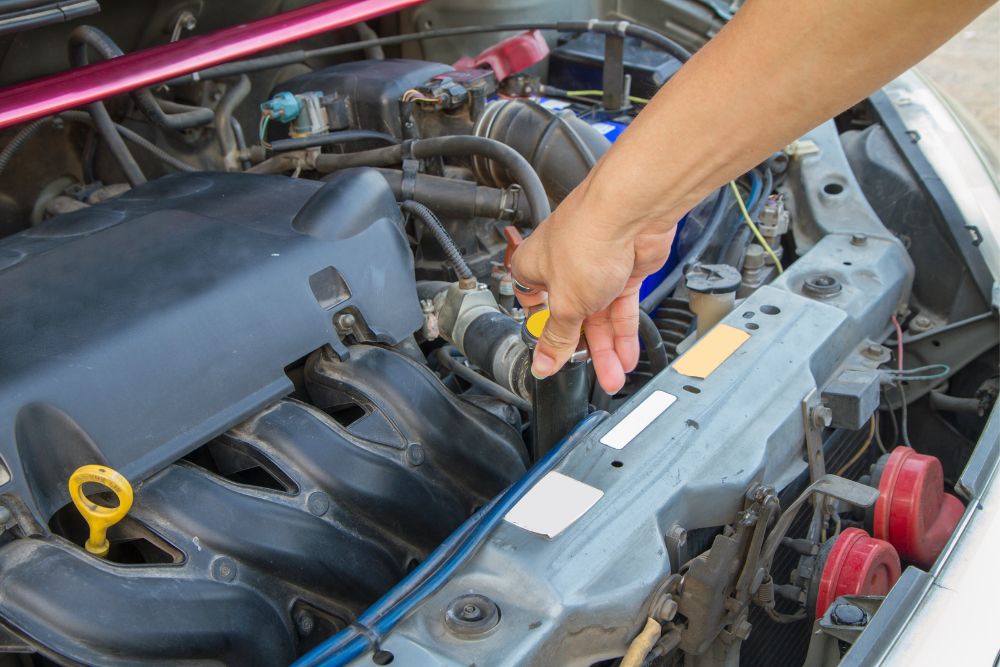
Radiators are indispensable components in automotive systems, crucial for maintaining engine temperature and preventing overheating. Whether you are a vehicle enthusiast, mechanic, or someone curious about car mechanics, understanding the engine radiator function and types is essential. This guide dives deep into what an engine radiator is, its function, and the different types of radiators based on materials, coolant flow designs, and coolant types.
Radiators are indispensable components in automotive systems, crucial for maintaining engine temperature and preventing overheating. Whether you are a vehicle enthusiast, mechanic, or someone curious about car mechanics, understanding the engine radiator function and types is essential. This guide dives deep into what an engine radiator is, its function, and the different types of radiators based on materials, coolant flow designs, and coolant types.
What Is An Engine Radiator?
An engine radiator is a heat exchanger that cools down the engine by transferring heat from the coolant to the surrounding air. This system is crucial in maintaining a stable operating temperature for the engine, preventing it from overheating.
In vehicles, the radiator works in conjunction with a water pump, radiator fan, radiator cap, thermostat, and coolant to circulate fluid through the engine and cool it down.
Functions Of An Engine Radiator
The primary function of an engine radiator is to prevent the engine from overheating by:
- Heat Dissipation: The hot coolant from the engine flows into the radiator, where heat is released to the atmosphere.
- Maintaining Engine Temperature: It keeps the engine at an optimal working temperature for efficiency and safety.
- Extending Engine Life: Overheating can lead to engine damage. The radiator prevents this by effective heat regulation.
- Enhancing Performance: Stable engine temperatures allow for better fuel efficiency and performance.
Additionally, components like the radiator fan help increase airflow over the radiator fins, especially during idle or slow-speed conditions, while the radiator cap ensures pressure control within the cooling system.
Types Of Engine Radiators
Radiators come in various forms, classified based on their material, coolant flow design, and coolant type.
By Material
Aluminum Radiators
Lightweight and corrosion-resistant, aluminum radiators offer better thermal conductivity and are popular in modern vehicles.
Copper-Brass Radiators
Known for superior heat dissipation, these radiators were commonly used in older vehicles. However, they are heavier than aluminum variants.
By Coolant Flow Design
Crossflow Radiators
In these radiators, the coolant flows horizontally from one side to another, providing efficient cooling in performance cars.
Downflow Radiators
Coolant flows vertically in this design, suitable for vehicles with limited horizontal space.
By Coolant Type
Water-Based Coolants
Most common in standard vehicles, water-based coolants are mixed with antifreeze to prevent freezing and corrosion.
Oil-Cooled Radiators
Used in high-performance vehicles, oil-cooled radiators use oil to absorb and dissipate heat effectively.
Wrapping Up
The engine radiator is a vital component of a vehicle’s cooling system, ensuring optimal engine performance and longevity. Without a properly functioning radiator, the engine can overheat, leading to severe damage and costly repairs. Understanding the various radiator types and their functions allows for better vehicle maintenance and informed decision-making when upgrades or replacements are needed.
For instance, knowing the differences between aluminum and plastic radiators can help you choose the right one for your vehicle’s specific needs. Furthermore, being aware of how factors like climate and driving conditions can impact radiator performance ensures that you can select the most suitable option for your situation. Ultimately, this knowledge empowers vehicle owners to make proactive choices that enhance their vehicle’s efficiency and reliability.
FAQ’s
What is the main function of an engine radiator?
The primary function of an engine radiator is to cool the engine by dissipating heat from the coolant to the surrounding air.
What is a radiator fan, and why is it important?
A radiator fan enhances airflow over the radiator, especially when the vehicle is stationary, ensuring proper engine cooling.
What does a radiator cap do?
A radiator cap maintains system pressure, prevents coolant from boiling, and allows coolant overflow to return once cooled.
What is a transformer radiator?
A transformer radiator is used in electrical transformers to dissipate heat generated during operation, preventing overheating.
How does coolant flow in a crossflow radiator?
In a crossflow radiator, the coolant flows horizontally from one side of the radiator to the other, increasing heat exchange efficiency.
What type of radiator is best for my car?
Aluminum radiators are commonly recommended due to their lightweight nature, corrosion resistance, and superior heat dissipation.


